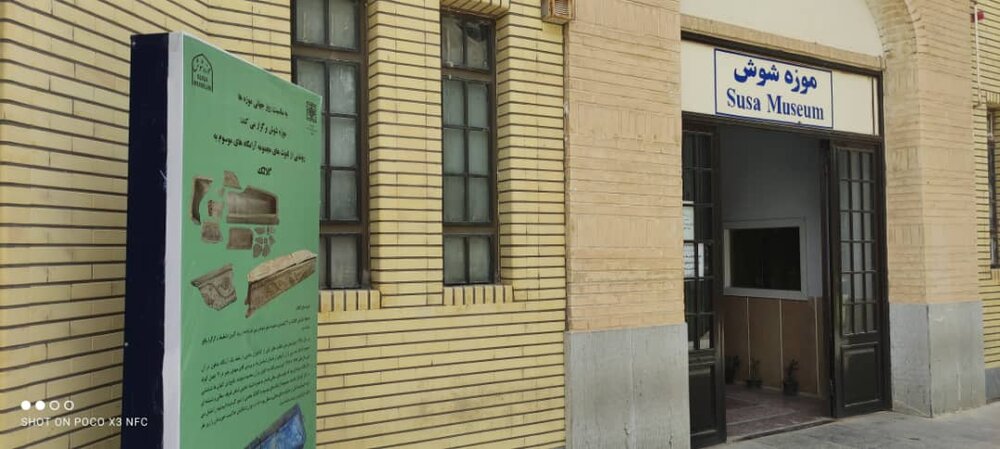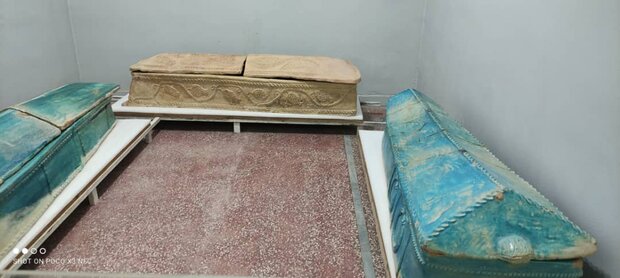Parthian coffins on show at Susa Museum

TEHRAN – Three rarely-seen coffins dating from the Parthian era (247 BC – 224 CE) have been put on show at the Susa Museum in southwest Iran.
“It is the first time the coffins go on public show after they were unearthed during four seasons of excavation, the first three of which were conducted from 1986 to 1988. And the fourth season was conducted in 1998,” the director of Susa World Heritage site said on Saturday.
“A team of cultural heritage experts led by Iranian archaeologist Mehdi Rahbar discovered the coffins from an ancient cemetery in Galalak village of Khuzestan province,” Bijan Heydari said.
“Those excavations yielded burial places of several local sovereigns who ruled during the Parthian era,” the official explained.
“The burial places included five catacomb tombs, each having a number of coffins, and funerary objects such as clay and glassworks. Moreover, a bust of Mithra (the god of light) was found in one of the tombs.”

The UNESCO-listed Susa embraces the whole southern flank of modern Shush in southwest Iran. Originally similar in scale to the UNESCO-designated Persepolis, the city saw countless invasions and sackings during its history which spans almost 6000 years.
Susa served as a winter residence for Persian kings after being captured by Cyrus the Great. It became part of the Persian Empire under Cyrus II, the Great in 538 or 539 BC. Archaeological excavations in Susa have yielded numerous relics including pottery, arms, ornamental objects, metalwork, bronze articles, and clay tablets to name a few.
In the Bible, Susa is known primarily from the story of Esther in which Haman the Agagite planned to defeat the Jews of Persia. According to the story, Esther outwitted him by persuading her husband, King Ahasuerus of Persia, to sabotage Haman’s plan. The episode is commemorated every year in the Jewish Purim festival which is marked with costumed parties and other celebrations, according to Ancient Origins.
Moreover, Susa is mentioned in Nehemiah and Daniel, both of whom lived in the city during the 6th century BC in the period known as the Babylonian captivity when several Jews were held captive following the siege of Jerusalem by Nebuchadnezzar. A tomb known as Shush-Daniel is believed to be that of Daniel himself. It is capped by an unusual white cone which some belief was formerly a stone ‘Star of David’.
Archaeological excavations in Susa have yielded numerous relics including pottery, arms, ornamental objects, metalwork, bronze articles, and clay tablets to name a few. Archaeological evidence suggests that Susa has been continuously inhabited since 4,200 BC placing it among the oldest continuously inhabited cities in the world. In addition, there are traces at Susa of a village inhabited around 7,000 BC and painted pottery dating from ca. 5,000 BC at the site.
It is said that Alexander of Macedonia captured Susa in 330 BC and plundered the city, seizing some 40,000 talents of gold and silver from the treasury. Alexander the Great initiated Shushan’s decline by favoring Babylon and shortly after, following a revolt, the city was burnt to the ground. Subsequently rebuilt by Sapor II (309-379 CE), it was renamed Iranshahr Shapur and later helped in the resistance against the Arab invasion of 645.
After the fall of the Achaemenid Empire and the reign of Alexander the Great, who married in Susa, the city became part of the Seleucid empire. It was now called Seleucia on the Eulaeus. A palace in Greek style was erected, next to Darius’ palace. The administrative center, however, was in the southern part of the city, where nearly all Greek and Parthian inscriptions were discovered. In the Parthian age, the city minted coins.
During the Sasanian age, the city had a large Christian community. It was sacked by the Sasanian king Shapur II, who transferred the population to Iwan-e Karkheh, but Susa was sufficiently recovered in the early seventh century to fight against the Arabs, who nevertheless captured the city which remained important until the thirteenth century CE.
According to UNESCO, “the excavated architectural monuments include administrative, residential, and palatial structures” and the site contains several layers of urban settlement dating from the 5th millennium BC through the 13th century CE.
AFM
Leave a Comment